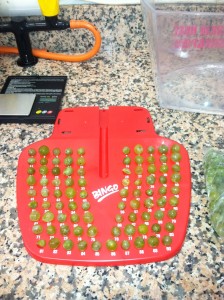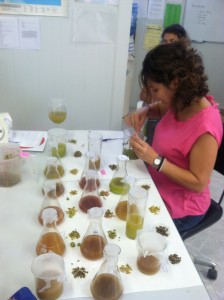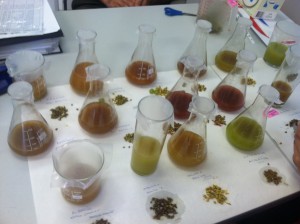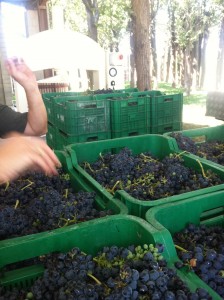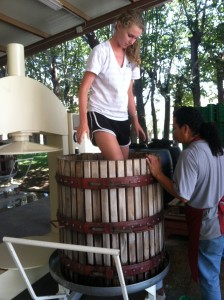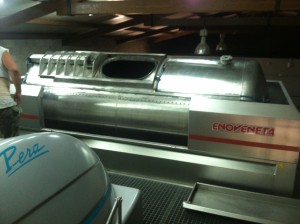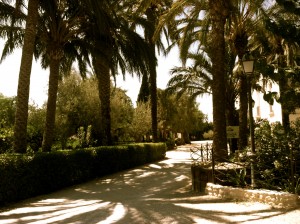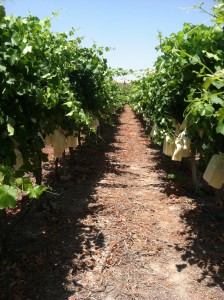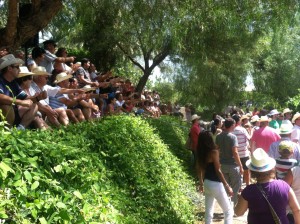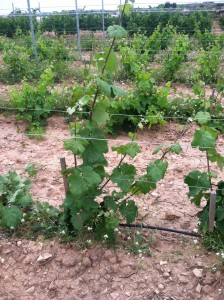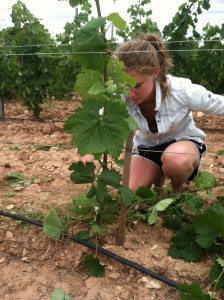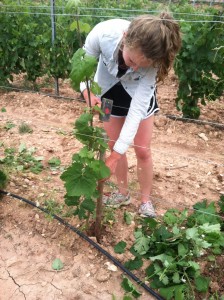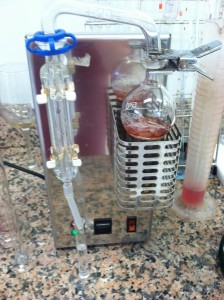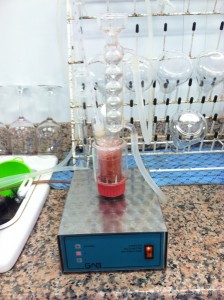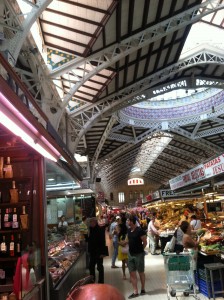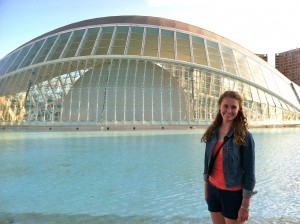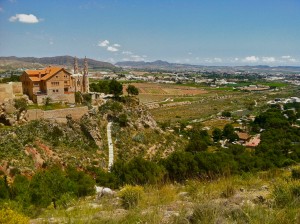I am happy to say harvest has began! We are just starting to pick the White varieties and the reds for rosé. They are maturing quite quickly now that the heat has really come on. The nights don’t cool down much like they do in California and I think this makes them ripen faster. An important job during harvest season is to test the maturity of the grapes in order to know when to harvest which parcels. To do this we take Berry samples from all 20 parcels. We bring them back to the lab and count out 300 of each bag. We weigh the 300 berries before squishing them into a pulp. The juice is then filtered from the pulp and seeds. The sugar content is measured with a density measure. The more dense the juice, the more sugar content the juice has. Then we measure total acidity and pH. The data is recorded and compared to last year’s data from the same exact date. It was very interesting because this year the grapes are considerably less mature on this date. The sugars are lower and This is probably because the summer has been milder and with more rain. Seed samples are also taken from the grape crush to analyze their maturity. Looking at all of the little labeled piles of seeds from different varieties really shows the difference between them. The red varieties had larger greener seeds that the White varieties. It is typical for whites to ripen earlier and this was clear from the more shriveled and darker Brown seeds. In addition we tasted the seeds and crunched them up in our mouths. The acidity of the Green seeds was much higher than the drier more Brown seeds. The berry samples and tests are done once each week to study the maturation and to know when to expect to harvest. Whites will likely be finished by the end of August and reds will begin in mid September through October.
Nuria sorting seeds
The harvesting system is much different than what I am used to. At home a crew comes in to harvest and they are paid per bin they pick. The workers run quickly up and down the rows to dump the grapes at the tractor. Here in Spain the crew is paid hourly which changes the system completely. There is much less rushing and they day in general is more relaxed. In the morning the bins are placed in the rows so they are all ready to go. The crew comes in and picks into the bins which are then picked up by the tractor.
When the grapes are brought to the winery they are immediately crushed. There are 2 large presses that are up high so that gravity can help us and carry the juice to the tanks below. A couple of times we used the small hydraulic press for small batches of grapes. This was much for fun for me because I got to climb into the press and stomp the grapes, “I Love Lucy”- style, as they loaded it up. The juice goes directly into temperature-controlled tanks to wait for fermentation. The first tank took about 3 or 4 days to start. You can tell very easily when it starts because the top gets covered in a layer of white sparkly foam. It’s very pretty.
Harvest is still continuing but unfortunately I had to come back home. School starts soon so I won’t be able to stay for the harvest of the reds. I pretty bummed but that just means I will have to come back to Spain one day! I really had a fabulous time here and will never forget the hospitality that Casa Sicilia showed me. They welcomed me as one of the family and I am so happy to know that I will always have a home here in Novelda. It is hard to say adios but this semester is looking promising. I have wine lab in the shiny new Stocking Hall winery and labs!
I can’t sign off without a little shoutout to my friends in Novelda and my dear Spanglish group. I call them the coffee clan because we met for coffee almost every afternoon, and then filled every weekend with lots of adventures. They helped me so much with learning Spanish and really made my time unforgettable. I dearly hope that one day one of them will show up on my doorstep to visit back in the states. “Spanglish” was also filled with unforgettable people, Spanish and English alike. We got together twice a week and had a great time practicing our languages and laughing…a lot. I can’t wait for the day when one of them calls me in the U.S so I can give back some of the hospitality they showed me.
Hasta luego España, nunca te olvidaré.
Ciao! -Brooke

